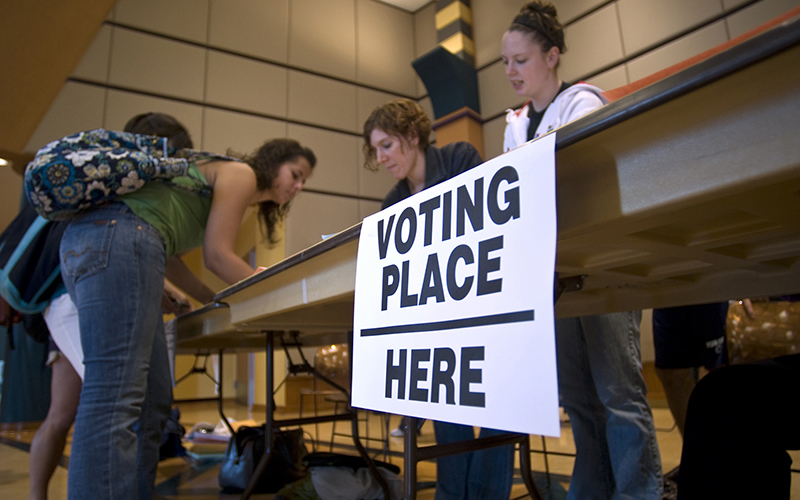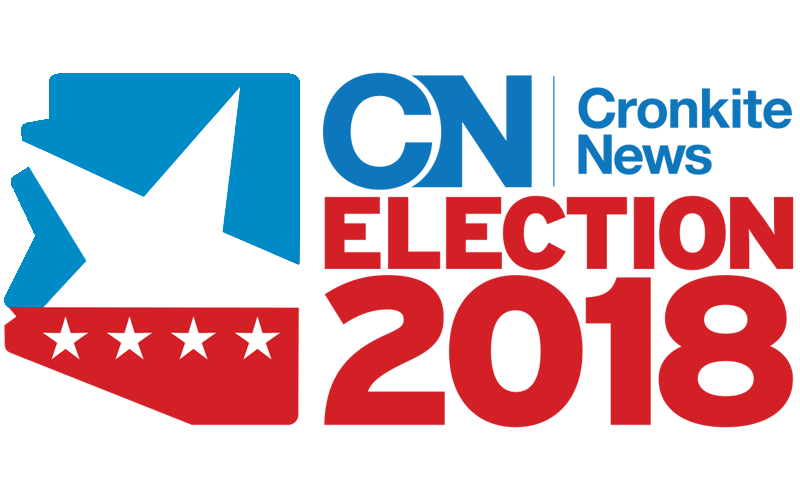WASHINGTON – Arizona election officials are optimistic they will have the thousands of poll workers needed for Election Day, but they said the long days and an aging pool of workers is making it harder to staff up every year.
That mirrors a 2017 U.S. Elections Assistance Commission report that said “nearly 65 percent of jurisdictions reported that it was ‘very difficult’ or ‘somewhat difficult’ to obtain a sufficient number of poll workers” in 2016, when more than half of those workers were 61 or older.
Maricopa County Recorder Adrian Fontes said his county is “on track with all of our goals and markers” for Election Day staffing but acknowledged it has “never been an easy task to recruit folks to work for one incredibly demanding day for very little money.”
Other Arizona counties report similar struggles.
“In the last few election cycles, we have been struggling to recruit poll workers. Last cycle we had a lot of difficulty with it,” said Eric Mariscal, elections director for Gila County.
Most of the county’s poll workers are 65 or older, he said, and “they experience a lot of medical issues … so, they come out and try to do a job for us, but then they find out that the length of day is (it’s) just incredibly difficult for them and so we lose a lot of them.”
Polls are open for 13 hours, from 6 a.m. to 7 p.m., and most workers are on the job from an hour before the polls open to an hour after they close, officials said.
Many counties said they hire reserves to ensure sufficient Election Day staffing.
“Sometimes we have a shortage, but we try to hire alternates as well – people that are just on call in case somebody calls in,” said Lynn Constabile, elections director for Yavapai County.
Mariscal said Gila County is trying to recruit younger workers with targeted advertising and social media, including Facebook, with limited success so far.
“It is difficult to recruit them,” he said. “Unfortunately, our younger generations don’t seem to want to be stepping up.
“Still, right now we’re doing pretty good, we’re doing better than we were in the last election in the primary.”
Arizona has gotten some help this year from an online site that aims to connect prospective poll workers with their local elections offices.
The Be the Difference, Be a Poll Worker campaign includes “digital, radio and billboard ads to recruit a diverse group of poll workers … in four target states: Arizona, Ohio, Pennsylvania and Wisconsin.” The site is a part of a pilot program called All Voting Is Local, run by the Access Democracy campaign.
“There has historically been a problem in Arizona, as there has been in a number of other states, with just having enough poll workers,” said Alex Gulotta, Arizona state director for All Voting Is Local.
Gulotta said the website has referred more than 700 Arizonans to the appropriate county offices to volunteer, including “about 400 in Maricopa County, 250 in Pima and 50 in Coconino.”
Besides trying to boost overall numbers, he said the campaign focuses on reaching younger workers and those who better reflect the communities they serve by “getting people of color, getting people who speak Spanish and other languages … getting individuals with disabilities.”
“I just think that … making sure that the poll workers reflect the community that’s being served is a really valuable thing for us to work toward,” Gulotta said.
U.S. Elections Assistance Commission Chairman Thomas Hicks agreed.
“Part of the issues that we’re facing in terms of a poll-worker shortage is that people have this fear of going to polls and not seeing someone like them, particularly people with disabilities,” Hicks said. “It’s the same for others, in terms of young people or our veterans.”
One thing that could be working in favor of elections officials is the high number of early ballots that officials have seen coming in so far.
“Early voting is getting more and more popular,” said Kevin Scholl, elections director for La Paz County. “Seventy percent of our voters are voting early ballots, so that really relieved the polls quite a bit.”
The increase in mail-in ballots in Pima County since 2006 has meant “fewer and fewer people show up at the polling places,” which has allowed the county to reduce its number of polling places, county elections director Brad Nelson said.
“As we’ve reduced the number of precincts, we still have that existing pool of poll workers, so we do not have the problems that perhaps other counties might have,” Nelson said. “We’re in pretty good shape.”
But not everyone thinks heavy early voting will translate to an easier Election Day.
Yavapai County Recorder Leslie M. Hoffman looked out her office window last week and saw “a line out to the road” of people waiting to drop off early ballots. She and Constabile think that could be a sign of high interest that will mean more voters on Election Day, not fewer.
“We’re getting in a lot of ballots and we’re trying to keep up and I think we’re doing a good job with that,” Constabile said. “They’re rolling in and we’re really happy. I think the turnout’s going to be really good and we’re going to be working a lot of hours, which is OK.”
Gulotta said the struggle to attract poll workers is fundamental to the process.
“It’s a critical piece of how our democracy functions and we need people to do it,” he said. “And the frosting on the cake is it’s also a paying gig.”
Connect with us on Facebook.

